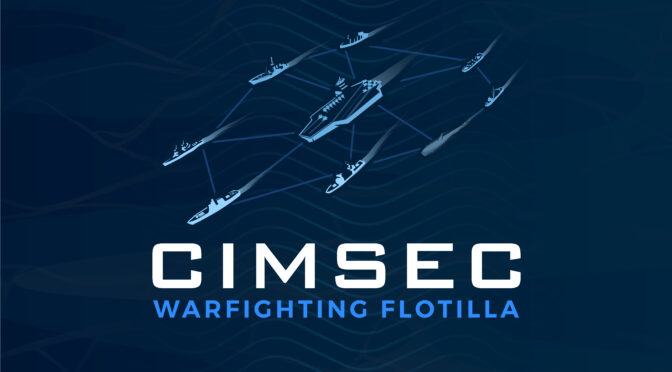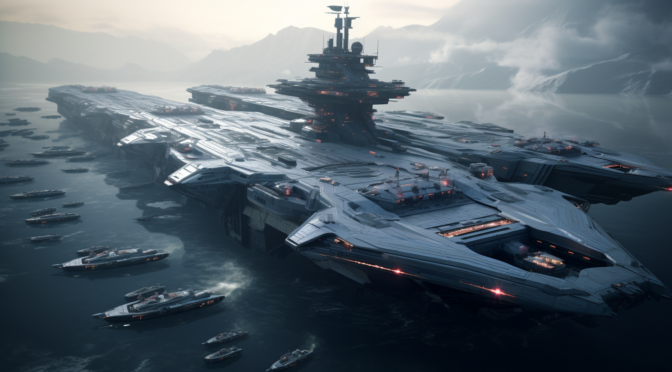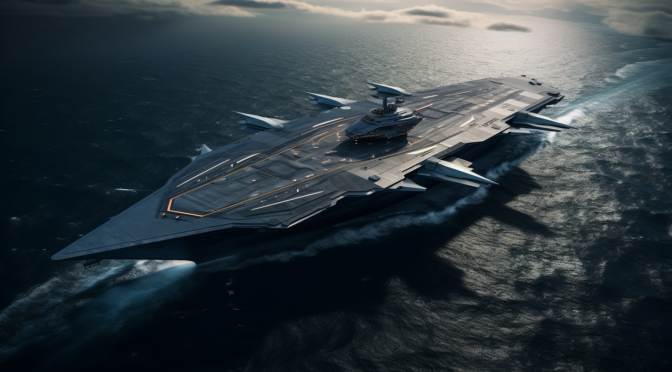By Dmitry Filipoff
For the past two weeks, CIMSEC published short stories submitted in response to our call for fiction. Authors illuminated a variety of future scenarios and dynamics as they explored how conflict and competition may transform. The featured authors are listed below, and we thank them for their excellent contributions.
“SAG-58,” by Tyler Totten
“Taken as a group, SAG-58 was one of the most powerful anti-air warfare assets afloat. Roark collected and analyzed all the group’s sensor data. Needing only milliseconds to consider a thousand options, the orders flew across the laser comms network.”
“Wave Runner,” by H I Sutton
“The three hatched a plan. If the maritime militia vessels were indeed uncrewed, and if their camera were fixed in sleep mode, they could slip through by passing each vessel close astern. Slowly, methodically, they weaved their way through the ghost fleet. They could only hope, pray, that none of the cameras would spot them.”
“Heavy Metal at Midnight,” by Karl Flynn
“Beyond the constant sweeping of the antennae on the radar vehicles, there was no activity on the objective. Liu checked over the geometries of fire on his HUD. As expected, everything was as it should be – a near perfect L-shaped ambush with Staff Sergeant Dalton’s half of the platoon forming the base of the L to his right.”
“In Perpetuity,” by Daniel Lee
“This unit was abruptly interrupted by the supervisor. ‘What the hell is wrong with…!’ he started, his voice slightly muffled as though he was talking to someone else. ‘Unit eleven-three!’ he proceeded, his voice louder, angrier, and more directed, ‘I don’t need to explain myself to you! Follow my orders or I’m sending you to the yards to get scrapped!’”
“Dead Men Tell No Tales,” by Brian Kerg
“The pilothouse opened on the Chinese boat, and a lean, wiry man stepped out, holding his own megaphone. His sleeveless t-shirt and board shorts contrasted sharply with the black assault rifle slung to his body and the sheathed dagger at his hip. In highly polished English, he replied.”
“The United States Vs. Charles Alan Ordway,” by David Strachan
“For the first couple months it was just answering some general e-mail inquiries about concepts of operations or certain technologies. But then Henrik started asking me pretty pointed questions about my research at FathomWorks. Initially I pushed back, politely, and he would usually back down. But after a while he became very persistent.”
“War is my Racket,” by Kevin Smith
“‘Faith Aerospace is not a private military company, or PMC, if that’s what you’re implying,’ said Sean. ‘We also don’t pull the trigger. The platforms we sent are leased. We just build and maintain the platform – weapons release is controlled by the client. The end user.’”
“Vigilante Seven Two,” by Mike Barretta
“Complexity and connections mattered in consciousness. But serendipity, something sublime, had to happen to create Bob, and there was no reliable manufacturing process for the sublime. If such a rare thing as an AI could be construed as typical, then Bob was typical. It was a human-level intelligence in a technological package about the size of a melon.”
“Hide and Seek,” by Paul Viscovich
“‘Have someone tune the radar and gin up an OPREP-3 Pinnacle. Report this as an enemy contact!’ The group of little airborne drones held their positions and followed the U.S. destroyer for several minutes before disengaging and flying off toward the mainland. One carried the photograph of a visibly startled Navy commander.”
“Perilous Passage,” by Robert Burton
“Based on his calculations and observations through the bridge cameras, something didn’t add up. According to the GPS, they were positioned precisely in the center of the sea lane, and their plotted path suggested they should proceed without altering their course. However, his video camera monitors revealed that the peninsula of Centralia was now perilously close to their intended route, within a few degrees.”
“Dreadnought 2050,” by Tracy MacSephney
“By the time we arrive at the office, all those already on shift are engaged in battle with an airborne swarm attack. It’s clearly AGI only so no match for the Top Gun team, although the swarm is huge. I slip into a spare cubicle and signal for Thunder to take the cubicle next to me.”
“OX-XO,” by Daniel Goff
“After all the briefings, Col Marcus, SgtMaj Martin, LtCol Marini, and the OPSO LtCol Rose heard the morning brief by OX. That was the given name for their AI robot out of respect for the XO. OX’s metallic voice rang out a series of numbers and projections while it sat at the end of the table.”
“Dawn’s Early Light,” by Ben Plotkin
“Luca collapsed wet and exhausted on the deck next to the limp body. He stared up at the sky. It was a dark moonless night. He knew that once the sun set he had only a limited time to prepare for what was coming. His improvised search and rescue mission might have seriously compromised his timeline.”
“Dropping Out of Sight West of Heligoland,” by Till Andrzejewski
“’Moritz, Kalle, put on the suit. We’ll get the torpedo out of the water.’ The two understood immediately. Nobody protested. It took them five minutes to put on the thermal suits and go out. In the meantime, Miriam had summarized and sent the most important data in an email and hoped that the connection would hold.”
“War in the Dark,” by Ryan Belscamper
“This close to the mainland, the Chinese had to know we were here. So far, I think they’ve ignored us, or we’d have all died a while ago. Judging from the fireworks, I think they’ll be looking for us now.”
For more CIMSEC Fiction Weeks, feel free to view our 2022, 2021, and 2020 fiction contests.
Dmitry Filipoff is CIMSEC’s Director of Online Content. Contact him at [email protected].
Featured Image: Art created with Midjourney AI.




